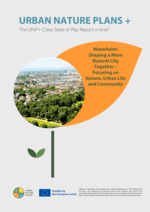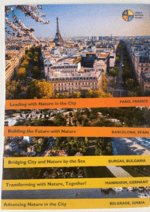
Mannheim Communication Resource: Getting to Know Local Birds
At the Mannheim Urban Nature Exchange, each participant was assigned a bird. They got to know their bird, and kept their eyes peeled during the exchange....
Greening City
Welcome to Mannheim, a city of more than 300,000 people with 170 different nationalities. Located at the confluence of the Rhine and Neckar rivers, Mannheim is not only a major transportation hub, but also a cultural melting pot known for its rich history and vibrant community spirit.
Greening Cities will participate in capacity building through UrbanbyNature and will test the UNP development framework, ensuring that their renaturing activites meet the requirements of the Urban Nature Platform.

At the Mannheim Urban Nature Exchange, each participant was assigned a bird. They got to know their bird, and kept their eyes peeled during the exchange....

Read Mannheim’s State of Play Report summary to discover its journey towards becoming a nature- and climate-neutral city. Through initiatives such as the...

City Postcards are a visual communication tool created for each partner city - Barcelona, Paris, Belgrade, Burgas, and Mannheim. Each postcard features a...